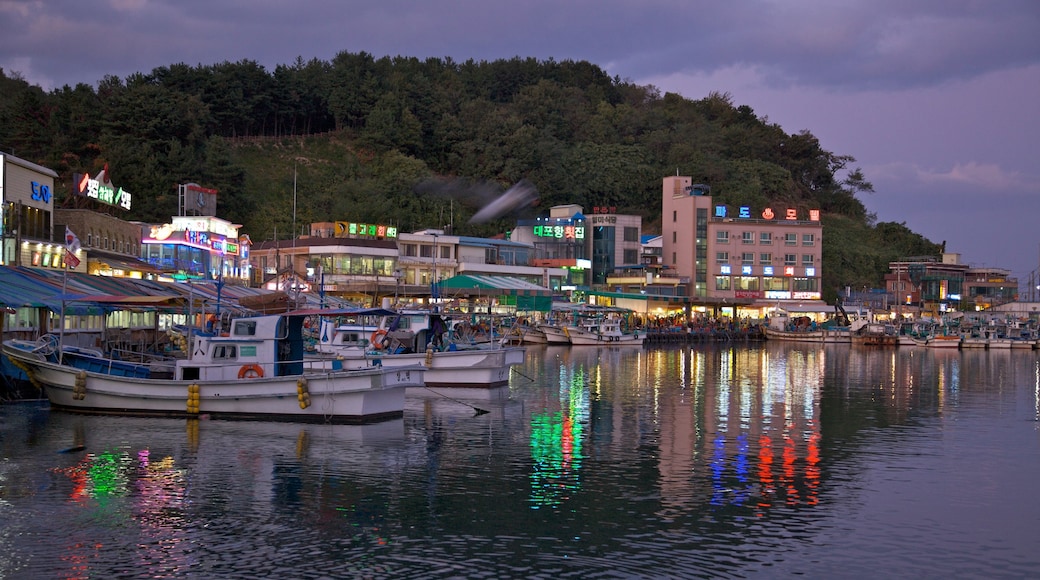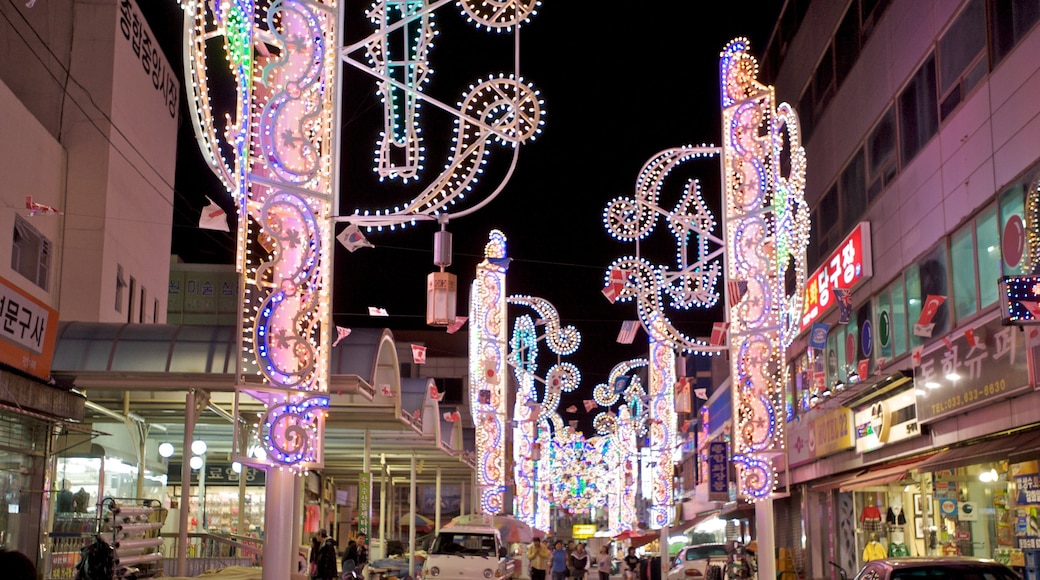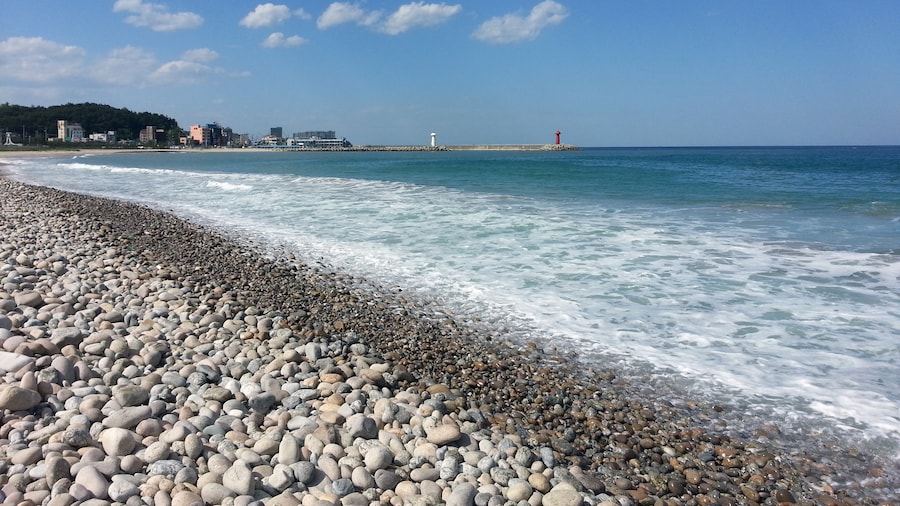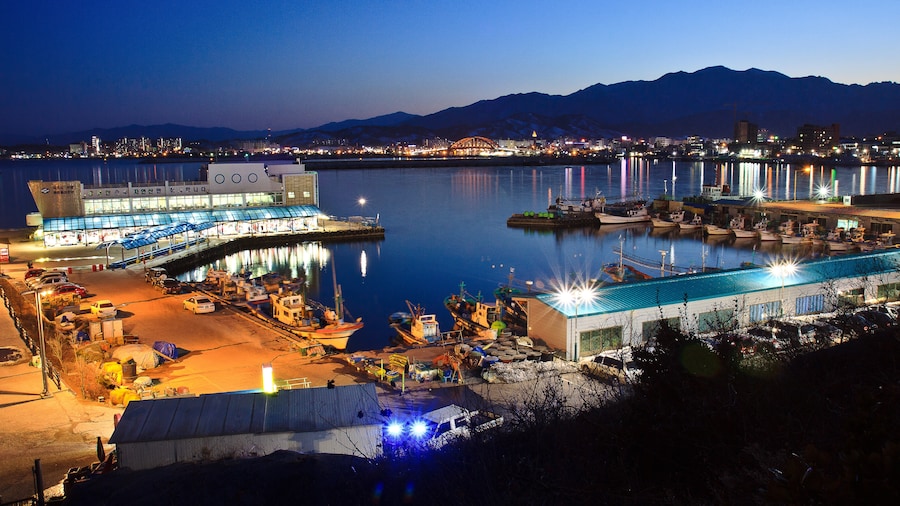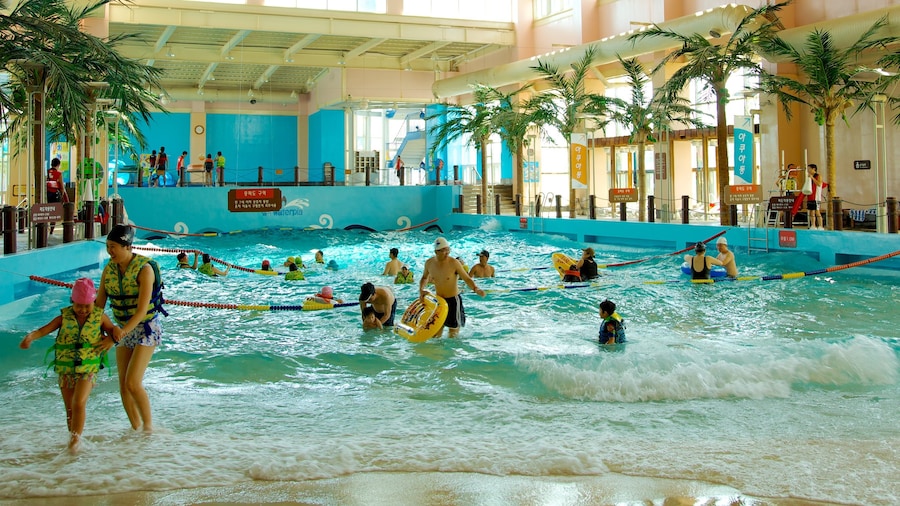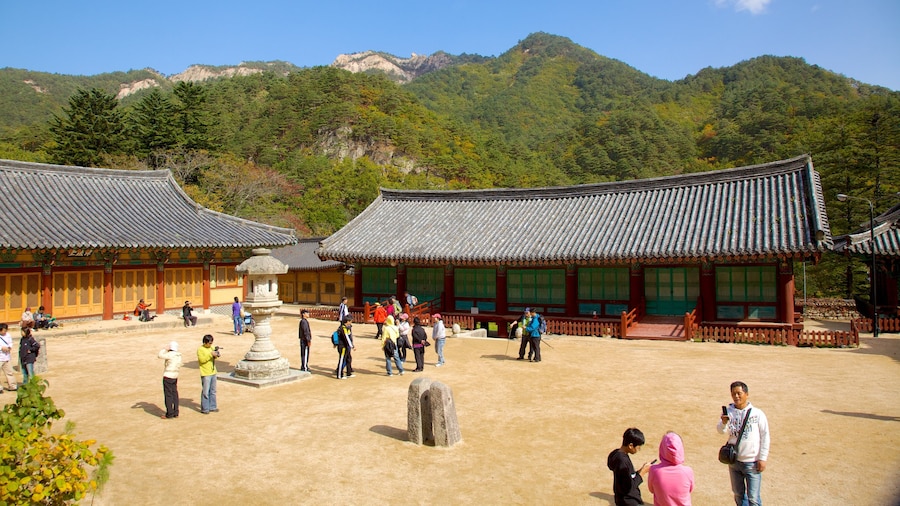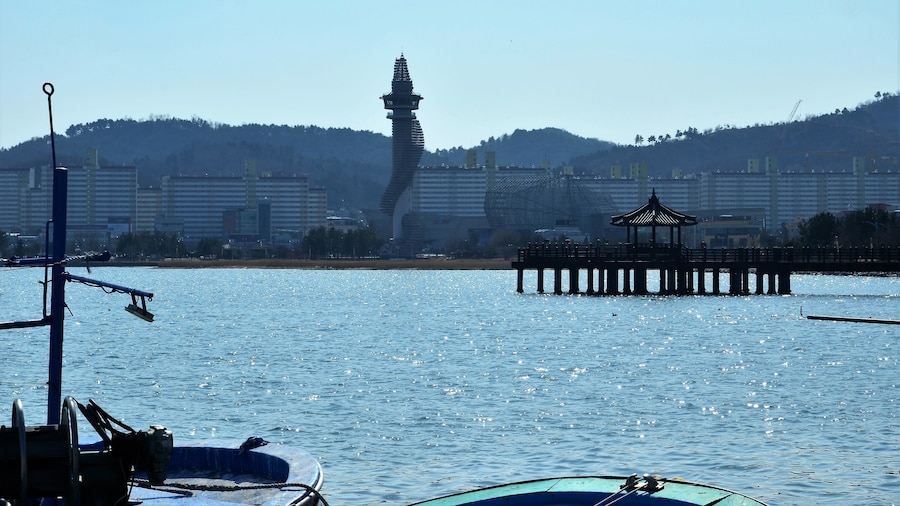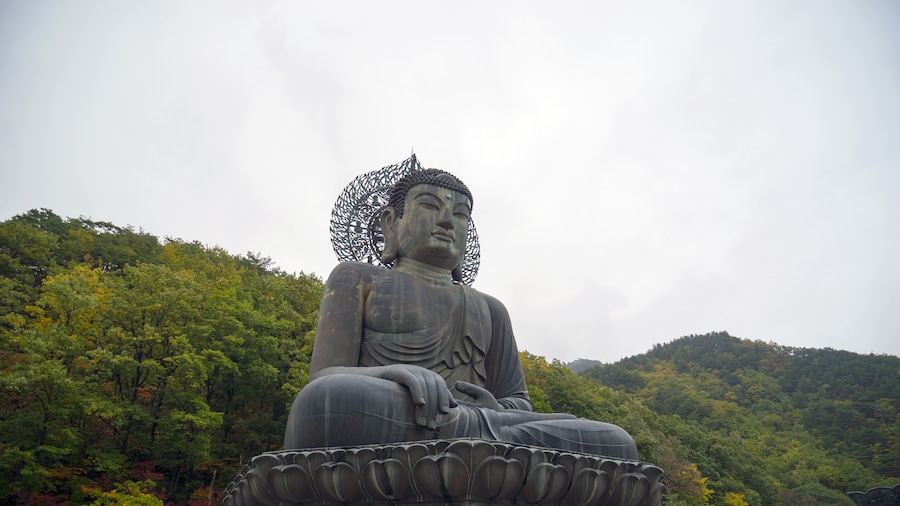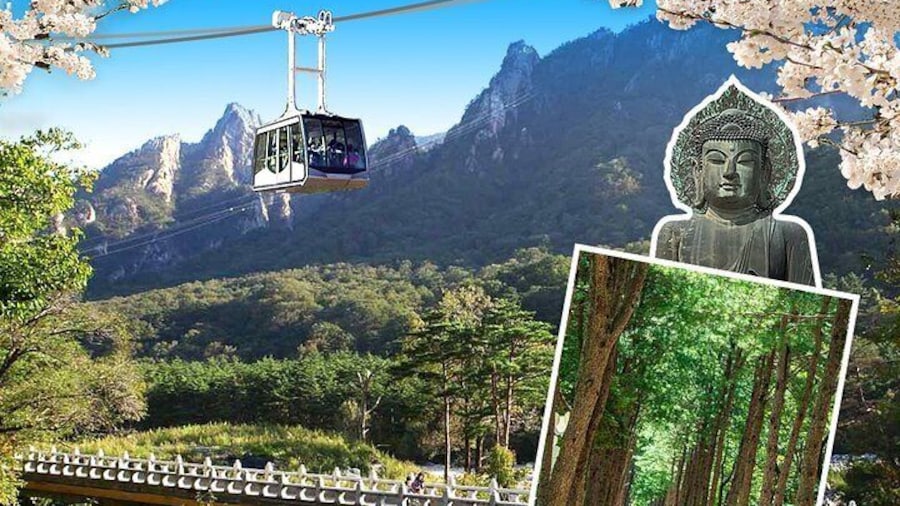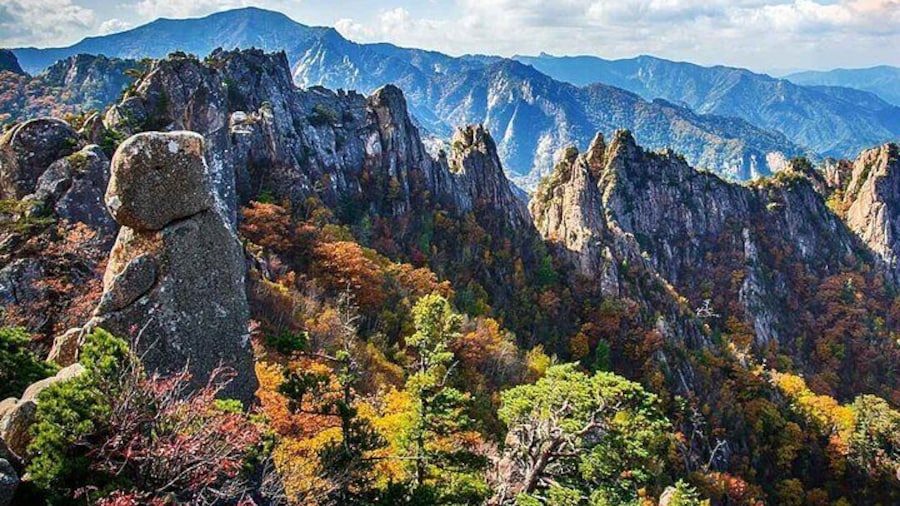The city of Sokcho lies in a peaceful setting between mountains and ocean, yet it is less than 30 miles (50 kilometers) from the heavily armed border between North and South Korea. These two extremes draw many visitors to the region.
Some come to the area to visit the Unification Observatory in Gosoung, about 20 miles (30 kilometers) away in Tongilanbo Park. In 1945, after World War II, the Korean peninsula was divided into Communist-influenced North and U.S.-controlled South, roughly at the 38th Parallel. The Korean War created a Demilitarized Zone along that border, ensuring near-total separation of North and South Korea, in some cases separating families forever.
Many Koreans hope for an eventual peaceful reunification. Another monument to this desire is the large bronze Buddha, Tongildaebul, near the Sinheungsa Temple inside Seoraksan National Park. The zen spirituality and the park’s tranquil surroundings provide a setting for peaceful meditation.
Others visit Seoraksan to enjoy the beauty and challenges of the outdoor location. Numerous mountain trails, from easy to very difficult, allow hikers and climbers to view mountains, waterfalls, diverse plant and animal life, dense forests, and even the East Sea (Sea of Japan). Autumn is a particularly beautiful time, with pleasant weather and colorful views as the leaves of the hardwood forest change to hues of yellow and red.
Sokcho offers appeal for all seasons. Extreme ice-climbers master the frozen Towangsung Waterfall while others enjoy winter with ice fishing on Lake Youngrang. Sokcho Beach has a summer festival and October brings the Seorak Cultural Festival.
South of Sokcho is Gangneung, a city by the sea with a lovely coastline, beautiful beaches, and sunrise sea views. Visit in the fourth month of the lunar calendar to experience the sights and sounds of the Gangneung Danoje Festival.
Manmade beauty harmonizes with a natural setting at Haslla Art World near Gangneung. Innovative designers have created outdoor art leveraging the natural beauty as well as unique indoor exhibits. The Haslla Art Museum Hotel is itself a work of art. The area also supports a community for artists in residence.
